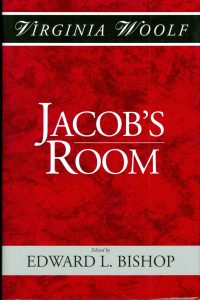
The Social Life of Ink by Ted Bishop
A rich and imaginative discovery of how ink has shaped culture and why it is here to stay. Ink is so much a part of daily life that we take it for granted, yet its invention was as significant as the wheel. Ink not only recorded culture, it bought political power, divided peoples, and led to murderous rivalries. Ancient letters on a page were revered as divine light, and precious ink recipes were held secret for centuries. And, when it first hit markets not so long ago, the excitement over the disposable ballpoint pen equalled that for a new smartphone—with similar complaints to the manufacturers.Curious about its impact on culture, literature, and the course of history, Ted Bishop sets out to explore the story of ink. From Budapest to Buenos Aires, he traces the lives of the innovators who created the ballpoint pen—revolutionary technology that still requires exact engineering today. Bishop visits a ranch in Utah to meet a master ink-maker who relishes igniting linseed oil to make traditional printers’ ink. In China, he learns that ink can be an exquisite object, the subject of poetry, and a means of strengthening (or straining) family bonds. And in the Middle East, he sees the world’s oldest Qur’an, stained with the blood of the caliph who was assassinated while reading it.An inquisitive and personal tour around the world, The Social Life of Ink asks us to look more closely at something we see so often that we don’t see it at all.

Riding With Rilke by Ted Bishop
A motorcycle odyssey that combines the sensory seduction of the road with the intellectual rewards of archival research. Named a ‘Best Book’ by the Globe and Mail, the CBC, and Playboy magazine. In this “joyful book” (Booklist), archive diver and Ducati enthusiast Ted Bishop takes readers on an epic trip from Edmonton to Austin, through the classic landscapes of the American West, and to some of America’s and Europe’s most famous cities as he considers what it means to be a road dog and a researcher. Whether describing how he came to own a Ducati, debating the merits of D. H. Lawrence’s novels, relishing the outlaw thrill of cruising small American towns on his bike, or holding Virginia Woolf’s suicide note in the British Library, Bishop “easily blends his love of books and archives with his love of motorcycles and riding…an unusual combination…but one that ultimately works” … Read More

Jacob’s Room by Ted Bishop
First published in 1922, Jacob’s Room was Virginia Woolf’s third novel and the first in her more experimental mode. Set in the years leading up to the First World War, the work is an elegy, not just for an individual character, but for a generation lost in and affected by the war.This Shakespeare Head Press edition restores the text to its original form, notably recreating the space breaks on the page with which Woolf deliberately fragmented her narrative. The editor provides an extensive introduction, discussing the genesis of the novel, its biographical elements, the process of composition and revision, and the history of its early critical reception. A series of notes helps the reader to identify references and allusions, from sponge-bag trousers and gold beater’s skin to Tonks and Steer, and the Hampstead Garden Suburbs; while an appendix lists variants between the first … Read More

Jacob’s Room by Ted Bishop
Based on the holograph manuscript in the Henry W. and Albert A. Berg Collection of English and American Literature at the New York Public library, this transcription follows the original three-volume manuscript page for page and line for line, giving the reader a sense of how Jacob’s Room was truly a work in progress. Written between 1920 and 1922, Jacob’s Room was a literary experiment for Woolf, leaving behind the traditional forms of her previous novels, The Voyage Out and Night and Day. Included in Bishop’s text are the short sketches that Virginia Woolf included in volume II of the manuscript. Additionally, spelling and punctuation has not been corrected or normalized to maintain continuity with the original manuscript.

A Virginia Woolf Chronology by Ted Bishop
This research guide charts the progress of Virginia Woolf’s major novels, listing the several hundred reviews and essays she published during her lifetime, and records her work with the Hogarth Press. It also traces her friendships with notable figures including T.S.Eliot, E.M.Forster, Katherine Mansfield and Vita Sackville-West and records her meetings with personalities as diverse as Henry James, Lady Diana Cooper, Sigmund Freud and the Princess de Polignac. While it notes Woolf’s extensive reading, as well as her travels and her illnesses, it also sketches the major artistic and political events of the day.

Virginia Woolf by Ted Bishop
This introduction to Virginia Woolf provides an overview of Woolf’s life as a writer, explores the connections between her fiction and her criticism, and analyses her major novels, tracing the development of her experimental techniques and her evolving sense of language.
Ted Bishop

Books